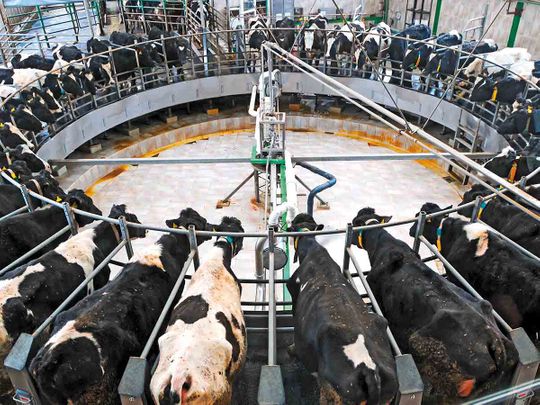
Highlight
Covid-19 fears may have botched demand-supply chains for milk production globally, but rising confidence in market forces among industry players provides a positive ring to the World Milk Day narrative
As tales of farmers dumping their milk inventory came through in the latter part of March and early April from around the world, arising from large-scale disruptions in the demand-supply chain caused by Covid-19, the overlying concern shaping the milk industry right now is that of food security.
Globally, with restaurants and schools shutting down, there was a sudden requirement to cater to the needs of retail groceries instead of the wholesale food-service markets, a logistical nightmare for industry players processing dairy produce, especially milk. As trucking and logistical companies found it increasingly difficult to hire drivers for vehicles, with many deciding to stop working due to fears arising from the spread of Covid, sales to major dairy export markets experienced sharp drops as the food-service sector saw large-scale disruptions.
Relay confidence
Today, as the world celebrates the 20th anniversary of World Milk Day, which is also the overarching theme for the commemorative day, there is an urgent need to relay a sense of confidence among milk producers and get the demand-supply chain back on track. It’s true that the dairy industry was hit harder and earlier than most other agriculture industries considering its high perishability factor. Milk cannot be stored for long, and it cannot be frozen in wholesale quantities for later use, or even stored in silos like grain. So it had to be dumped.
And the irony of it all is that this large-scale dumping of milk was happening at a time when demand for consumer milk actually was soaring in the initial days and months after the pandemic struck, with milk on grocery
shelves emptying within hours as people resorted to panic buying. Retail purchase of milk in the US, for instance, rose by 53 per cent by the third week of March in comparison to the same period the previous year, according to figures served up by global information and data release firm Nielsen.
With a certain degree of uncertainty as to the fortunes of the industry in the immediate future, what’s critical is milk processors maximising returns to the dairy farmgate with a strong opening milk price. According to studies conducted by the United Dairy Farmers of Victoria, Australia, the move could create a level of confidence for the dairy industry in the coming months and allow it to build and maintain a financial buffer for milk farms against any form of uncertainty in the demand-supply chain.
Not dying but evolving
The volume of cow milk produced worldwide reached 522 million metric tons in 2019, up from 497 million metric tons in 2015, with liquid milk making up the largest share of the dairy market in terms of market value, according to German online statistics portal, Statista. That said, the closure of farms in the US as demand for milk fell steadily over the years gave rise to concerns whether the milk industry was dying. Industry watchers, on the contrary, believe the sector is evolving. While sales figures of traditional and conventional milk, though decreasing are still mammoth, what’s making a slow but steady impression is alternative milk sources. Oat milk for instance saw a whopping 600 per cent jump in US markets alone last year, while derivations of milk including lactose-free versions and organic milk from grass-fed cows have seen a spurt in sales as consumers gravitate towards healthy options.
Local demand
In the UAE, the consumption of dairy products has always been regarded as healthy by its population. And despite Covid fears adding a blimp to the proceedings, the growth experienced by the UAE in the last decade, its expanding population and assured tourist inflow in the coming years will leave the nation’s dairy sector largely unaffected and experiencing swift growth, according to a study conducted by global market research firm Mordor Intelligence.
While the harsh desert climate may not be conducive to rearing cattle for milk production, ingenuity and drive shown by entrepreneurs and milk producers are helping the UAE meet growing consumer demand, with advanced technology being incorporated into the dairy sector, employing proper dairy business models and the automation of milk production.
What’s the fuss all about?
World Milk Day is an international day, established by the Food and Agriculture Organisation of the United Nations, that recognises the importance of milk as a global food. It’s observed on June 1 each year since 2001. The UN decided on the date based on the fact that most nations were already holding their respective national commemorative days for milk around the same time.











